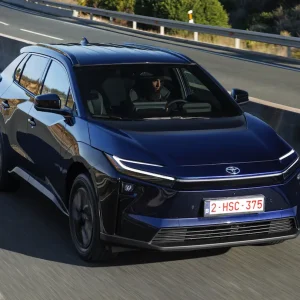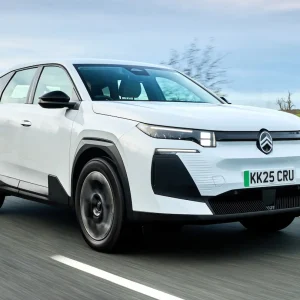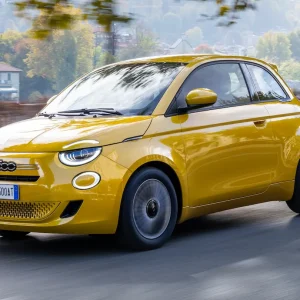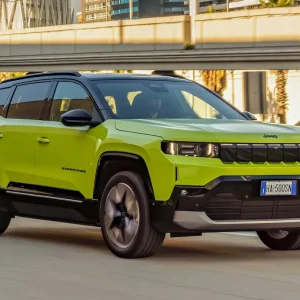There is no denying that Fiesta is something of an icon. With 4,500,000 sold since 1976 – making it Britain’s top seller for eight consecutive years – demand for this mini Ford just keeps on growing.
But with this status comes responsibility, and to maintain its position as the king of the small car segment, Ford has to ensure the choice and quality that it offers with the Fiesta is nothing but top draw.
With new rivals such as the Skoda Fabia, Citroen C3 and Seat Ibiza appearing left, right and centre, Ford decided to relaunch the whole Fiesta line-up complete with four different trims to appeal to as many customer demands as possible.
Ford launched the new range in north-west Spain, and we jumped in the 1.5 TDCi 120PS Diesel with Titanium trim and a manual gearbox. The Fiesta has many trim options including the upscale Vignale, sporty ST-Line, Zetec and entry-level Style. There are even Bang & Olufsen editions for music lovers.
Is this seat taken?
Placing an emphasis on quality, Ford has significantly improved the interior of the Fiesta, and this is even noticeable on the lower-level trims. There are some hard plastics dotted around, especially under the dash, but generally the materials are of a high quality for the class.
The compact car has a 292-litre boot, smaller than the Skoda Fabia (330 litres) and the Citroen C3 (300 litres), but slightly bigger than the Mazda 2 (280 litres). Headroom and legroom in the front and back seats is also good as Ford has stretched the latest model by 71mm in length and 13mm in width.
A focus on advanced technology is one of the unique selling points of this new line-up, which Ford believes is required if it is to continue to lead the highly competitive B-segment. In fact, according to Ford, the significant increase in technology makes the Fiesta the most advanced small car in Europe.
This technology includes advanced driver assistance systems, supported by two cameras, three radars and 12 ultrasonic sensors. Combined, they are able to monitor 360° degrees around the vehicle and scan the road ahead up to a distance of 130m – more than the length of a football pitch.
The Fiesta is also the first Ford to deliver an enhanced version of Pre-Collision Assist with Pedestrian Detection that can detect people in or near the road ahead, or who may cross the vehicle’s path, using light from the car’s headlights at night.

Right in the centre of the dash there is a large touchscreen. Our car boasted a £300 sat-nav upgrade with 8in display, but a 6.5in unit is standard and doesn’t look too small.
Enhanced quality is also noted in the comfort of the seating, which has apparently gone through 60,000 tests to ensure wear-resistance. The seat material is also checked for flexibility and comfort after 24 hours at -30°C.
Moving to the exterior and Ford hasn’t gone for a drastic Fiesta redesign, opting instead for a few subtle changes. The biggest change to the body is noticeable at the rear, where the tail lamps have been arranged horizontally, changing the feel of the car.
Engines include the 1.0-litre EcoBoost petrol offering up to 140 PS, and the 1.5-litre TDCi diesel that we drove. Ford expects this to be the best seller for fleets, offering 120 PS – making it the first high-power diesel Fiesta powertrain.
The sense of fun is enhanced by the engine, which delivers good performance at high and low speeds. An all-new six-speed transmission with innovative friction reduction technologies helps deliver CO2 emissions from 89g/km, less than the comparable Citroen C3 (95g/km), Skoda Fabia (112g/km) and matches the Mazda 2 (89g/km).
A more premium experience
A stiffer body structure, reduced powertrain noise vibration and harshness, enhanced powertrain isolation, and an acoustic windshield contribute to a more comfortable and premium driver and passenger experience. It is obvious Ford has worked hard on refinement with the Fiesta and the quietness in the cabin is apparent immediately. Apparently, at 62 mph it offers a 7% improvement over the outgoing Fiesta.
One particularly notable feature is the handling. As expected, bumps on the road are absorbed and the steering feels nicely weighted, making for a stable but fun drive.
Regarding whole life costs, the new is very competitive. In this particular spec the compact car holds a respectable 32% of its value after three years and 60,000 miles compared to only 20% held by the Mazda 2 and 24% held by the Fabia. It will also cost fleet operators just £41.34 per mile.
Next year, the Fiesta Active crossover – the first in a new line-up of Active vehicles to be rolled out across the range – will be launched, combining what Ford describes as rugged SUV-inspired styling that includes raised ride-height and roof bars. Also next year, the manufacturer will launch the new 200 PS Fiesta ST. But until then, we believe Ford’s comprehensive new Fiesta line-up is good enough to keep it at the top spot. 
Ford Fiesta 1.5-litre TDCi 5Dr manual Titanium 120PS
P11D Price: £18,370
On sale: June 2017
Residual value: 31.0%
Fuel: £3,365
Service, maintenance & repair: £1,630
Cost-per-mile: 41.3p
Fuel consumption: 88.3mpg
CO2 (BIK Band): 89g/km (22%)
BIK 20/40% per month: £61/£122
Boot space: 292 litres
Engine size/power: 1500cc/118hp





